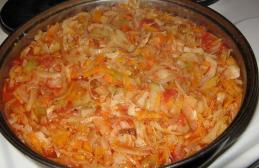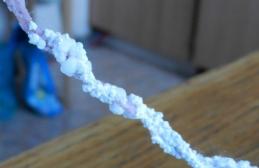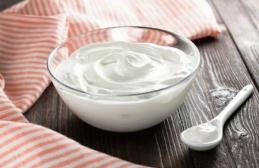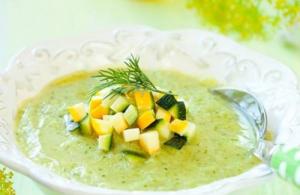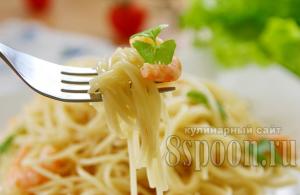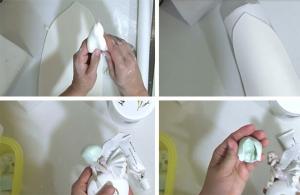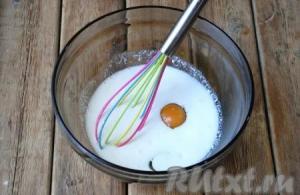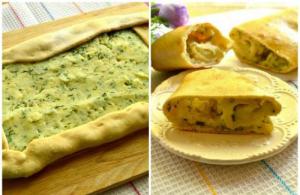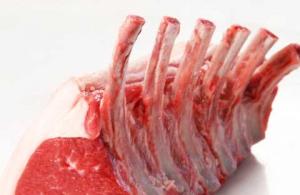Today, many people are interested in the question regarding marshmallows: “What is it?” This delicacy has become widespread these days not only due to its delicate taste and aroma, but also because mastic is made from it for decorating cakes. In addition, you can sculpt various figures from it that will make any dessert unique.
So, marshmallows are a type of candy that resembles marshmallows in its consistency. However, the difference is that this delicacy does not contain whipped egg whites and remains more elastic. Therefore, often when asked: “Marshmallow - what is it?” - They answer that this is chewing marshmallow. However, in terms of composition and method of preparation, these candies are more similar to marshmallows.
This treat tastes great with hot chocolate or just on its own. It's no secret that many people are interested in how to make marshmallows at home. In fact, there is nothing complicated. Below are these. If you make them in the shape of hearts, this is also a wonderful romantic gift for your other half.
So (we’ve already found out what it is, now let’s look at how to prepare it)
Ingredients you will need:
4 packets of gelatin (4 tablespoons);
1.5 glasses of water;
2 cups small jelly candies;
1 cup of sugar;
1 cup corn syrup (can be replaced with sugar);
1/4 teaspoon salt;
Powdered sugar;
Vegetable oil.
How to cook marshmallows:
In a large bowl, combine 4 packets of gelatin and 3/4 cup water. Stir with a spoon until the water becomes very thick.

Place gummies, sugar, salt and 3/4 cup water in a separate pan. Place the mixture over medium heat and stir until most of the candy has melted. Then reduce the heat and bring the mixture to a slow boil. Check the cooking temperature as follows: if you drop some of the mixture into cold water, it should become soft and flexible and form a lump. If you remove it from the water, it will flatten into a pancake after a few moments in your hand. Continue cooking at this temperature.
Once the mixture is cooked to the correct temperature, turn off the heat and, using a mixer at full speed, beat it into the gelatin. Beat for about 15 minutes.
Line the inside of a rectangular pan with parchment paper and lightly grease it with oil. Once the mixture is whipped, pour it into the pan. Distribute evenly and leave for 10-12 hours. After 10-12 hours, when the mixture has hardened, you can cut the finished marshmallows.

First, cover your workbench with a layer of powdered sugar. Then take the frozen mixture and pour it out of the mold onto the powdered sugar. Now you can cut out the candies in the shape you like. After you cut out the shapes, coat them with powdered sugar to prevent them from sticking to each other. This step-by-step instruction gives a clear answer to the question: “Marshmallow - what is it and how to make it?” - and will allow you to prepare a delicious homemade dessert that not only children, but also adults will enjoy. You can store these candies in an airtight container for up to a week. Bon appetit!
Marshmallow (marshmallow)- a type of candy, a kind of marshmallow, marshmallow, but either completely without whipped egg whites, which give marshmallows and marshmallows a special tenderness, or with a minimal amount of them.
Sometimes, due to the small size of the marshmallow pieces, they are called mini marshmallows. Despite some similarities with marshmallows, marshmallow is, albeit similar, but a different confectionery product.
Due to the absence of egg whites, marshmallow-like marshmallows are denser. The difference in their consistency from marshmallows and marshmallows is similar to the difference between regular marmalade and denser chewing marmalade. That's why marshmallows are sometimes called "chewy marshmallows."
The name “marsh mallow” itself is translated as “marsh mallow,” that is, marshmallow. A sticky jelly-like white mass was obtained from marshmallow root. Over time, marshmallow was replaced by gelatin and starch. Modern "puffed" marshmallows first appeared in the United States in the 1950s. They began to be produced by Kraft.
But the Americans were not the discoverers of marshmallow sweets. Even in ancient Egypt, sweets were made from the white juice of marshmallow root mixed with honey. And the prototype of modern marshmallows first appeared in France.
Small pieces of marshmallow are added to salads, desserts, ice cream, and decorated with cakes and pastries. American children love to put marshmallow pieces in a cup of hot cocoa. The most famous and somewhat stereotypically traditional method of preparation in America is to fry lozenges over a fire during forest picnics. As the marshmallow warms up, it increases in size, becomes airy and viscous inside, and brown and crispy on top.

Roasting over a fire.
Story
Marshmallow probably first originated as a medicinal product, as it was made from the root extract of the Marshmallow or Marshmallow officinalis plant, which were used as a remedy for sore throats. A decoction of other parts of the Marshmallow plant has also been used medicinally. Since ancient Egyptian times, marshmallow root has been used in combination with honey to treat sore throats. A later French version of the recipe, called pâte de guimauve (or simply "guimauve"), included an egg white meringue and was often flavored with rosewater. Pâte de guimauve most closely resembles modern commercially available Marshmallows, which no longer contain Marshmallow.
The use of Marshmallow officinalis for making candy dates back to ancient Egypt, where the juice was extracted from it and mixed with nuts and honey. Another old recipe used the root of Marshmallow, not its juice. The root was peeled to expose the core, which was boiled with sugar syrup. The liquid was then dried, resulting in a soft and sticky sweet that took a long time to chew. French candy makers of the 19th century introduced several innovations to the sweet recipe to bring this confection closer to the modern appearance of marshmallow. These confectionery products were made in some regions by the owners of small confectionery shops, who obtained the juice from the marshmallow root and whipped it themselves. These candies were very popular, but their production was labor intensive. In the late 19th century, French manufacturers developed a way around this limitation by using egg whites or gelatin with cornstarch to achieve the desired consistency. This method did reduce the labor intensity of extracting the juice from the marshmallow root and making marshmallows, but it required the right technology to combine the gelatin with the cornstarch.
Another milestone in the development of modern Marshmallow was introduced by the invention of the extrusion process by American Alex Doumak in 1948. This allowed the production of Marshmallow to be fully automated and produce the cylindrical shape that is now associated with modern Marshmallow. All the ingredients came through pipes, were moved and extruded into a cylinder, which was cut into pieces and sprinkled with portions of a mixture of cornstarch and powdered sugar. Alex Doumak founded Doumak Inc. in 1961 based on a patent he had obtained for the process.
Marshmallows are sold by weight and in bags. Most often they are white, sometimes colored. There are also marshmallows in chocolate or caramel glaze, with nuts and aromatic additives. Large and small, round and square. For some time now, these candies have been sold in Russia. Although in our stores it is easier to find long four-color “flagella” rather than white donuts. Marshmallows are also made from mastic for decorating cakes and pastries.
There are various types of marshmallow candies on sale, slightly different in appearance, incl. color, taste and aroma.
For example, like this:





Marshmallow mass according to its composition- this is a mixture of gelatin (or dextrose) diluted in water, whipped hot into a stiff foam, with sugar syrup (simultaneously sucrose, glucose and fructose) and with the addition of flavoring substances necessary to create a pleasant taste and smell at the end of whipping (such as white marshmallows) . It is also possible to add some food coloring - such marshmallows are colored to varying degrees of saturation.
Such a mass and candies from it, only of much better quality, can be easily prepared at home.
After beating and cooling, the marshmallow mass becomes dense, sponge-like, retaining significant stickiness.
The cooled, very thick sticky mass is cut into separate small pieces, which, to prevent them from sticking together, are generously rolled in a mixture of powdered sugar and starch in a 1:1 ratio.
White marshmallows are the most optimal for making confectionery mastic, because... The mastic made from them can be painted in any desired colors or left white.
NOTE. If the candies are multi-colored, it is advisable to divide them into pieces of the same color, and prepare separate mastic from the pieces of each color.
Important notes on marshmallow ingredients
In industry, the addition of so-called sucrose to syrup "invert" syrup or "corn" syrup It is produced mainly to reduce the cost of industrial confectionery products, as well as to slightly reduce the risk of sucrose crystallization in the finished product while reducing the consumption of relatively expensive citric acid (in food production, every penny is counted and saved).
Much more reliably the risk of crystallization is reduced by sufficient acidification sugar syrup, for example, citric acid, lemon juice, etc. At the same time, the syrup or confectionery product turns out to be sour-sweet and more pleasant to the taste.
Cooking fructose syrup is simple: fructose + water + a little citric acid to taste (even better - lemon juice) and boil a little, then cool and bottle. If the syrup is too thin, add fructose; if it is too thick, add a little water. Store, like any other product, in a dark place. Of course, instead of water, it is better to use fruit juices with a not too pronounced color (apple, pineapple, white grape) - the absence of a pronounced color will allow you to add such syrup to mastics of any color. Even better is to prepare several syrups of different colors with different freshly squeezed juices.
Cm. COOKING SYRUPS
.
We also add sufficient amounts of citric acid to our products, tasting to taste. Excessive addition of citric acid or lemon juice to counteract crystallization is useless, but may make the product too sour.
It is also important that the syrup made from pure fructose does not contain any unwanted hydrolysis by-products that arise in “invert” or “corn” syrups during their chemical production.
Of course, syrup made from ready-made fructose is more expensive than “invert” or “corn” syrup, but given the volume of home-made confectionery products, the difference in price will be no more than half the cost of one tram ticket.
Well, to carry out chemical hydrolysis of the original products at home to obtain much worse nutritional properties than fructose, but cheaper “invert” or “corn” syrups is completely unacceptable stupidity. Now this is not the 19th century, but the 21st century, so there is no need to carry out chemical hydrolysis in your kitchen - today pure fructose is sold in stores.
For mass industrial production, even such a penny saving on syrups is very important, as is the significant savings achieved on relatively expensive citric acid, but for home conditions this does not have any economic significance (as they say, you can’t save much on matches).
For the curious: About “invert” and “corn” syrups.
These are cheap syrups that contain a lot of sugars fructose and glucose, as well as many other by-products that arise during chemical hydrolysis. to prepare the “invert” and “corn” syrups indicated in the recipes.
Sahara(like alcohols, by the way) is a very large group of substances, and sucrose (in everyday life - “sugar”) is just one of the sugars, which is found in very little in natural plants. Quite a bit of sucrose found only in sugar cane and sugar beets, but these plants were artificially bred by man through centuries of selection. Sweet fruits and honey contain mainly the natural sugars fructose and glucose.
Invert syrup is obtained by acid hydrolysis of a sucrose solution at elevated temperature, which follows the formula
C 12 H 22 O 11 (sucrose) + H 2 0 (+ acid and temperature) = C 6 H 12 O 6 (glucose) + C 6 H 12 O 6 (fructose)
The resulting “invert” syrup, in addition to glucose and fructose, contains other sugar breakdown products, as well as residual sugar that has not been hydrolyzed. This syrup is sweeter than the original sucrose solution, because... glucose and fructose are sweeter than sugar. The addition of invert syrup to industrial confectionery products allows you to reduce sugar consumption and make products at a lower cost.
Corn syrup(close in composition to molasses) is made from corn starch.
In the past, commercial corn syrup production involved hydrolysis (saccharification) by boiling a solution of corn starch (much cheaper than potato starch) in the presence of perchloric or sulfuric acid, then removing the acid and insoluble residues. Currently, the main method of industrial production is two-stage enzymatic hydrolysis. The enzyme alpha-amylase (a product of the bacterium Bacillus subtilis) is used to hydrolyze starch into complex carbohydrates of various lengths, and the enzyme glucoamylase is used for further breakdown into glucose. It takes approximately 2,300 liters of corn kernels to produce one ton of syrup.
Corn syrup is high in glucose. But glucose syrup is difficult to store, because... has a high tendency to crystallize. Fructose corn syrup is also produced, in which 45% to 90% of the sugars are fructose. This syrup is sweeter and easier to dissolve. For its production, additional enzymes are used that convert glucose into fructose.
In the United States, corn syrup made from local corn is a cheaper alternative to cane sugar in candy, soft drinks and other products. Therefore, it is massively added to industrial confectionery products to reduce their cost.
It should be borne in mind that transferring various “economical” industrial food technologies to your home kitchen is not always reasonable, and sometimes even harmful.
For example, you don’t need to generously add all sorts of ingredients commonly used in food production to your homemade food. food additives E
and so on inedible rubbish
.
Http://supercook.ru/
http://ru.wikipedia.org/
*********************************************************************
What is it and what do you eat it with?
Marshmallow is a delicacy that gets its name from the English “marsh mallow”, which translates as “marsh mallow” or marshmallow.
They appeared in our country relatively recently and are still little known. These marshmallow-like candies are most often white, although other colors are also available. There are options with glaze (chocolate, caramel) and with nuts. They have different shapes: round, square, cylinders and even four-colored “flagella”. The size also varies.
The history of marshmallows.
The history of marshmallows began in Ancient Egypt. Where sweets were obtained by combining marshmallow juice, honey and nuts. In the 19th century, the French began to produce candies more similar to modern marshmallows, changing the recipe and simplifying the production process.
After some time, marshmallow began to be replaced with gelatin and starch. So in the 50s of the 20th century in the USA, the Kraft company released the first “airy” marshmallows, which are still produced to this day.
Today, chewing candies are produced under the name "Marshmallow", which in their structure and taste resemble marshmallows and marshmallows. They are sometimes called mini-marshmallows. True, unlike marshmallows, they do not contain eggs. Marshmallow necessarily contains applesauce and egg white, which are not found in marshmallows. Therefore, despite their similarities, they are completely different products.
What are they made of?
Marshmallows are made from sugar (or corn syrup), gelatin and water. Dyes and flavorings are used to add flavor and color.
The benefits and harms of marshmallows
Gelatin, which is part of marshmallow, performs the function of restoring cartilage and protecting joints.
Due to its high collagen content, it improves the condition of hair and nails; normalizes the functioning of the central nervous system and brain; promotes good metabolism; strengthens the heart muscle.
The airy lightness of marshmallows is deceptive, so you shouldn’t eat them in large quantities. This product contains quite a lot of sugar, which significantly increases its calorie content and negatively affects the figure.
How to use it correctly?
This version of chewing marshmallow can be eaten plain, and can also be used to decorate various desserts and confectionery products (mastic is made from them). They are added to salads and ice cream.
In America, marshmallows are eaten in a rather unusual way: they are fried over a fire, placed on a stick. In the process, they become larger, fry until brown, and the inside becomes airy and stretchy.
An equally traditional way to consume them is to add them to a cup of hot chocolate, coffee, cocoa, etc.
Colorful packages with snow-white or multi-colored, like a rainbow, pieces of chewing marshmallows hardly allow children to calmly pass by store shelves. Personally, my kids always ask to buy at least one pack of Marshmallows - how much they love this dense and at the same time airy, rubbery chewy marshmallow. But you don’t need to buy it - you can easily make it at home!
In fact, the recipe for homemade Marshmallows is quite simple and you can make it even with the kids. One morning my daughter and I did just that, although we got all smeared while we were whipping the mixture and then taking a sample. What can I say - delicious! Really tasty, tastier than store-bought gummies. Homemade chewing marshmallows are softer, but at the same time have the same fun stretch.
It should be noted that Marshmallow can also be prepared in lean form, that is, not with gelatin, but with agar-agar. In this case, take approximately 7-8 grams of agar-agar (one teaspoon under a knife, that is, without a slide, contains about 2 grams of powder). It will also need to be soaked in cold water for half an hour, then brought to a boil and cooked for a couple of minutes over low heat until the grains dissolve.
How else to use ready-made chewable Marshmallows, other than just eating them in their pure form? Americans, for example, roast it over a fire (we also do this in the summer), stringing it on sticks. In the process, the pieces are greatly crowned in size, the crust is caramelized, and the middle becomes liquid and viscous. Yummy... even for adults.
This chewy marshmallow is also actively used at home by cooks, or rather confectioners, to prepare mastic. The beauty of homemade Marshmallow is that it turns out snow-white, while in the store you can increasingly find multi-colored ones. It’s easier to paint the mastic in the desired color than to look for marshmallows of the right color.
And finally, if you like coffee, try throwing 3-4 marshmallows into a cup of freshly brewed aromatic hot drink. Depending on the temperature, they will begin to melt and an airy, sweet foam will form, like a cappuccino. Or add it to your kids’ cocoa - they love it very much.
Ingredients:
Cooking the dish step by step with photos:

To prepare homemade chewing Marshmallow marshmallows, we will need granulated sugar, water, invert syrup, gelatin, as well as powdered sugar and potato starch for sprinkling the finished dessert. By the way, you can safely use corn starch instead of potato starch if you want. I already gave you a detailed recipe for making invert syrup a year ago -. It can also be replaced with corn syrup.

So, first of all, let's deal with gelatin. It comes in different types: leaf, one that needs to be soaked in water, and instant. In this case, I had instant, and you always read on the packaging - the method of preparing it depends on this. So, if you have regular gelatin, soak it in 100 milliliters of cold boiled water, stir and let it swell for 30-40 minutes. After this, heat over medium heat, stirring constantly, until dissolved. Do not let it boil, otherwise the gelatin will lose its gelling properties! Instant gelatin just pour very hot boiled water and mix thoroughly so that all the grains disperse in the liquid.


Pour the still hot gelatin into a whipping container. Just choose more, since during the whipping process the marshmallow mass will greatly increase in volume.

Now let's quickly prepare the syrup. To do this, pour 400 grams of granulated sugar into a small saucepan, pour 100 milliliters of water and 160 grams of invert syrup.

Place over medium heat and, stirring, bring to a boil. You need to cook the syrup until its temperature is 110 degrees. Since I have nothing to measure it with, we determine readiness, so to speak, by eye - testing on a soft ball or thin thread. This means that if you take a drop of syrup and immediately place it in ice water, it will turn into a soft ball. Or else, squeeze a drop of syrup between 2 fingers and stretch - a thin thread should stretch. In total, I cooked the syrup after boiling for about 6-7 minutes.

When the syrup is almost ready, turn the heat to the lowest setting and start beating the gelatin with a mixer at high speed. It will cool down a little and during the beating process it will begin to form such a cloudy foam. Without stopping whisking (I stopped to take a photo), pour hot (not boiling, but very hot) sugar syrup into the gelatin in a thin stream.

Beat everything at high speed until you get such a thick and viscous marshmallow mass. Unlike the base for fruit marshmallows with egg whites, here the mass will not be as airy, more dense, so to speak. I didn’t track how long my mixer was running - I think you’ll understand when it’s enough.

It is advisable to prepare the mold in advance, since the marshmallow mass sets very quickly and will be difficult to work with. To do this, take any suitable container with sides (I have a rectangular baking dish 30x20 centimeters), cover it with baking paper and generously (don’t be stingy, otherwise everything will stick and you won’t be able to get it off!) sprinkle with a mixture of powdered sugar and starch (just mix and sift).

Quickly pour the marshmallow base into the mold and level it with a spoon or spatula. That's it, now you can rest - we send the Marshmallow preparation to a cool place (refrigerator or balcony) for 2-4 hours.

Sweets have always been very popular among people of different ages. Since childhood, the child finds various fruits, ice cream, cakes, sweets and other treats enjoyable. Such a list is standard for a resident of the post-Soviet space. In the West, there is a type of delicacy that came to us recently and has already managed to win the hearts of many sweet tooths.
The history of marshmallow creation
For the first time, the prototype of this delicacy appeared as a medicine. In Ancient Egypt, healers used a white sticky mass of marshmallow, which in English is called “marsh mallow”. It was used to relieve a patient of a sore throat. The mass had an unpleasant, bitter taste. Therefore, it was often mixed with honey. This allowed for more sweetness.
The new format of the delicacy highlighted the pleasant taste of the plant in combination with honey. Later, confectionery masters added nuts. From this moment on, marshmallow began to be used in the production of sweets. According to ancient recipes, cooks took the peeled root and boiled it with sugar syrup. The mixture was left and waited for it to dry. The result was a soft, chewy treat.
The treat was given its modern look in France in the 19th century. In those days, whipped marshmallow juice was used. The delicacy was very popular, but it was difficult to prepare. To simplify the preparation procedure and create the desired consistency, the juice was replaced with egg white and cornstarch. In some cases, the protein was replaced with gelatin. This made production more accessible. Places where you can start to meet more often.
The last stage in the development of the delicacy came at the end of the 40s of the last century. In the United States of America, Alex Doumak figured out how to give this delicacy a modern form. He made the dessert production process fully automated.
Useful qualities
Due to the fact that many natural ingredients are used to create the delicacy, marshmallow has benefits for various human organs and systems. Gelatin is a fundamental component. It has a positive effect on joints and cartilage, helping them to recover faster and receive protection from damage, both mechanical and age-related. Experts recommend using gelatin to speed up the healing of fractures.
Marshmallow is used as a mask and should be purchased by people who care about the elasticity of their skin. It contains a lot of collagen, which has a positive effect on hair and nails, strengthening them. Foods containing collagen are recommended to normalize blood pressure and stabilize the nervous system. Marshmallow contains a lot of glucose, which quickly saturates the body with the necessary energy. Thanks to this, such a snack during the working day will quickly get rid of the feeling of hunger and enhance brain function.
How do chefs use marshmallows?
Modern assortment of marshmallows marshmallows
The rapid development of technologies related to the food industry makes it possible to create sweets of various shapes and tastes. can be found from around the world. We present in our store two of the most popular companies today:
- Fini is a Spanish confectionery company.
- Bulgari is a world famous Italian brand.
They deserve the championship because they try to impress consumers not only with the delicious taste of healthy sweets, but also with an interesting appearance. Companies make sweets in the shape of various fruits, objects and characters. For example, or. There are also multi-colored treats in the usual cylindrical shape - pink and yellow sticks from Bulgari. Such “MarmeladShow.ru” at an affordable price. Everyone can order the right amount of sweets, since most often they are sold by weight.
It deserves special attention, which ice cream lovers will want to buy. It is presented as a ready-made mixture in a jar. Can be used both in confectionery and for a sandwich with morning coffee.
If you live in Moscow, then buying marshmallows will not be difficult. Our store is located at the Kitay-Gorod metro station. For residents of other cities, we provide the opportunity to buy marshmallows for the fire and fluff using online ordering in the online store.
The presented dessert has a huge history and thousands of varieties. The beneficial properties of the composition allow you not only to savor pleasant delicacies, but also to receive many benefits. Marshmallows have many variations of use, both in pure form and in combination with other products to create a decoration or addition to the main dessert.

